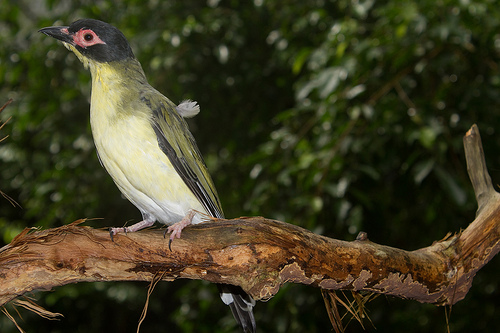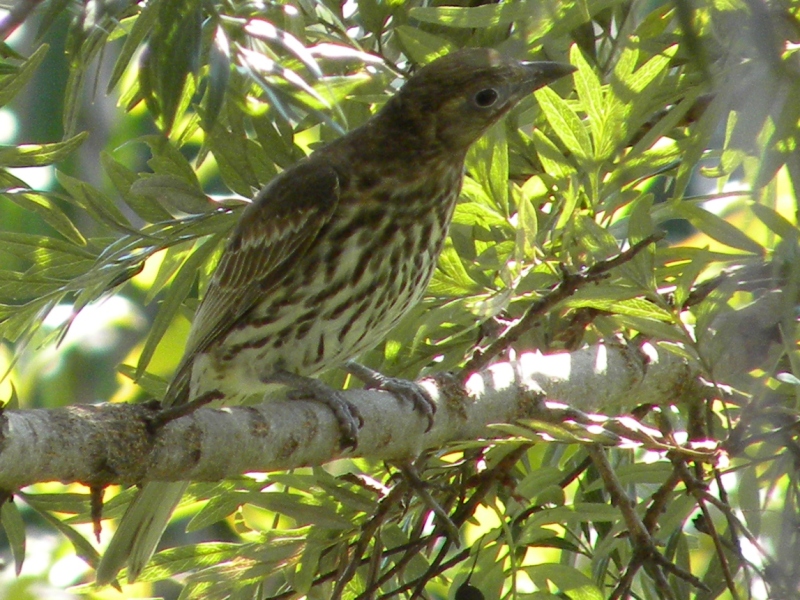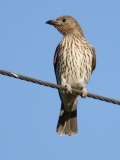Colours
Distinguishing features
It is sexually dimorphic, and the racial differences are almost entirely limited to the male. Males of all subspecies have a black tail with broad white tips to the outer rectrices, white crissum, blackish primaries, a black head, distinct bright red facial skin, a black bill with a red base, and pinkish legs. In the nominate subspecies, the body is largely olive-green, and the throat, neck and chest are grey. The subspecies cucullatus, ashbyi and flaviventris are yellowish olive-green above, and bright yellow below (including throat). The last subspecies, salvadorii, resembles previous, but with a grey throat, collar and chest similar to the nominate subspecies, thereby giving it an intermediate appearance not unlike some hybrids between nominate and flaviventris in Australia.
Females are drab-coloured, being dull brownish above, and white below with strong dark streaking. They have greyish facial skin, and a greyish-black bill.
Juveniles resemble females, but the streaking below is typically not as strong. (Wikipedia)
Size
- From 27 cm to 29.5 cm (Length of specimen)
Wingspan
- Wingspan data is not yet available.
Synonyms
Similar taxa
-
Animalia:
Green Figbird (species: Sphecotheres viridis)
The Green Figbird resembles the more widespread Australasian Figbird, but is smaller and, except for the paler crissum, the male is entirely yellow-olive below (including throat). (Wikipedia)
Distribution
Distribution and habitat preferences
It is native to a wide range of wooded habitats in northern and eastern Australia, southern Papua New Guinea, and the Kai Islands in Indonesia. (Wikipedias)
Diet
Australasian Figbirds are largely frugivorous, but also take small insects, nectar and small seeds. While largely a resident species (although the southern population may be migratory), it is nomadic in response to the availability of food. (Wikipedia)








